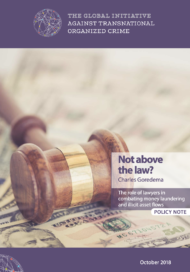Posted on 22 Sep 2017
by Julia McQuaid, Pamela G. Faber, Zack Gold
Abstract
By their very nature, transnational challenges are murky, often intermingled and thus difficult to analyze. This report provides an introductory examination to these challenges in an effort to build understanding around what they are and why they matter to current U.S. national security. Through our research, we derived a definition for transnational challenges and then used that definition to identify eleven such challenges that impact U.S. national security interests today. We observe trends and patterns among these challenges, including how they relate to one another and how they may evolve over time. We end with thoughts on which transnational challenges the United States should focus on, and why.
Introduction
In addition to threats from nation-states, the United States government (USG), including the Department of Defense (DOD) and the intelligence community, points to transnational challenges as a rising focus area of importance for the future. The recognition that threats to U.S. national security at home and abroad come from nonstate and/or non-traditional sources that span national boundaries has resulted in an increasing demand for research and analysis on these threats. Some transnational challenges, including terrorism, criminal networks, and piracy are long-standing and familiar; but there are also a number of transnational challenges, such as water stress, human trafficking, and smuggling, that are increasingly being cited as having a direct link to U.S. national security. These current and emerging challenges merit greater understanding in order to determine where they fit within the broader spectrum of U.S. national security priorities.
The purpose of this report is to explore the realm of transnational challenges and provide an organizational and conceptual framework to better understand them. We also discuss how and why transnational challenges matter for U.S. national security and how they relate to other U.S. national security priorities. We seek to bring clarity to what is an inherently murky topic in a way that supports USG efforts in addressing these challenges.



